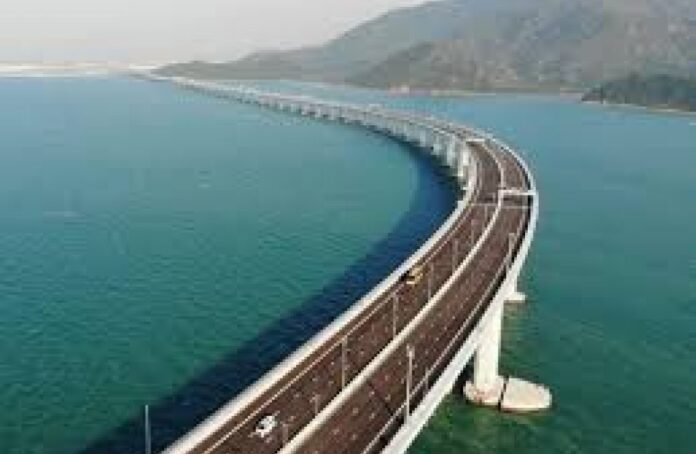The story behind the span
The Dhubri Phulbari Bridge is not merely an infrastructure project. It is a symbolic leap across the mighty Brahmaputra, finally stitching together Dhubri in Assam and Phulbari in Meghalaya. For decades, the only connection between the two banks involved slow ferries or a long 200 kilometre detour around the river. The new four lane road link will reduce this travel to close to 19 kilometres, accelerating movement of goods and people across the region.
Urgency, terrain adversity and strategic connectivity have shaped its narrative. As part of National Highway 127B, the bridge will act as a growth spine for border commerce, education, healthcare access and supply chain efficiency. The project is executed by Larsen and Toubro under the supervision of NHIDCL with financing support from Japan International Cooperation Agency.
From a remote river stretch, this corridor is evolving into a digitally monitored and steel driven ecosystem of mobility and progress.
Design and structural innovation
At around 19.282 kilometres including approaches, the Dhubri Phulbari Bridge ranks among India’s longest river crossings. The extradosed cable stay configuration blends the steadiness of girder bridges with the elegance and span efficiency of cable stay systems. The core navigation stretches measures about 12.625 kilometres with major approach viaducts of approximately 3.5 kilometres in Dhubri and 2.2 kilometres in Phulbari.
With Dhubri receiving roughly 2939 millimetres of rainfall annually and the Brahmaputra flowing with fierce hydraulic pressure, resilient foundations were essential. Ninety-four deep caisson wells anchored nearly 40 metres below the riverbed combat scour and shifting silt.
Steel forms the backbone of this engineering challenge. Long span steel decks and stay systems minimise the number of piers, reducing environmental disturbance and enabling faster modular construction. Detailed BIM workflows allow every bolt splice and segment of steel to be virtually rehearsed before installation.
Tech and innovation: BIM, monitoring and digital twin readiness
What sets this bridge apart is its digital DNA.
- BIM led collaboration ensures clash free coordination, efficient steel fabrication detailing and optimised construction sequencing
- Digital twin ready design prepares the structure for future sensor driven operational intelligence
- Lifecycle monitoring through embedded sensors in steel allows predictive maintenance and performance analytics powered by artificial intelligence
Why the steel industry should pay attention
The Dhubri Phulbari Bridge signals a shift in how steel is imagined in Indian infrastructure:
- Modular long span construction highlights steel’s adaptability to megascale river projects
- Fabrication precision becomes a key differentiator when BIM and digital traceability reduce tolerance errors
- Sensor ready steel components introduce new value in long term asset management
- Proven capability in remote and high rainfall regions opens doors for global tender competitiveness
- A new digital asset mindset treats steel as a monitored living structure across its service life
Expert takeaway for steel ecosystem stakeholders
- Start BIM at concept stage and maintain accuracy throughout fabrication
- Design steel components with integrated data and sensor compatibility
- Strengthen collaboration across design build operate phases of infrastructure
- Reimagine steel assets as long term value generators not static material
- Use challenging terrain projects to prove advanced construction skills
- Invest now in digital twin workflows as demand will surge across infra
What’s next for steel and connectivity:
With construction progressing in phases, the Dhubri Phulbari Bridge is already drawing attention for its planned logistics impact. Once operational, the corridor is expected to significantly cut travel time for goods moving between the Northeast and the rest of India, strengthening regional trade and boosting border-area development initiatives. The project also aligns with India’s Act East policy, reinforcing economic linkages with neighbouring countries through faster, steel powered connectivity.
Stay tuned
This bridge is a preview of how India plans to build its future. As progress continues on the Brahmaputra, stay tuned for more updates on how steel and digital intelligence will reshape connectivity across the country and beyond.




